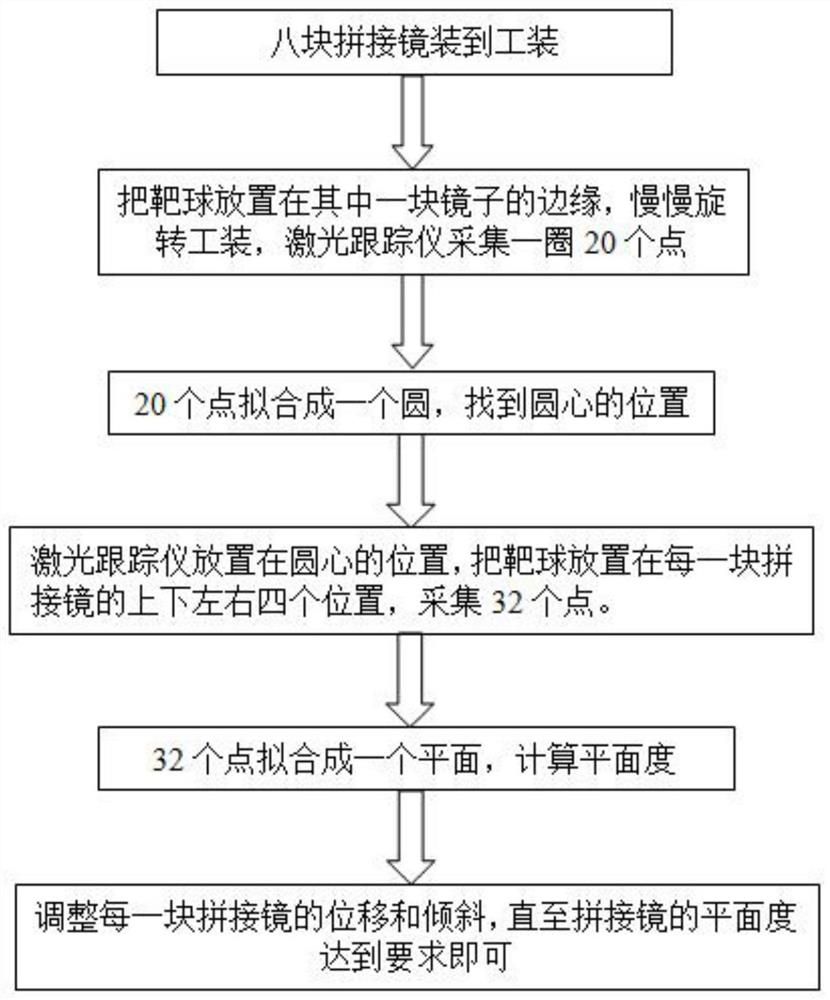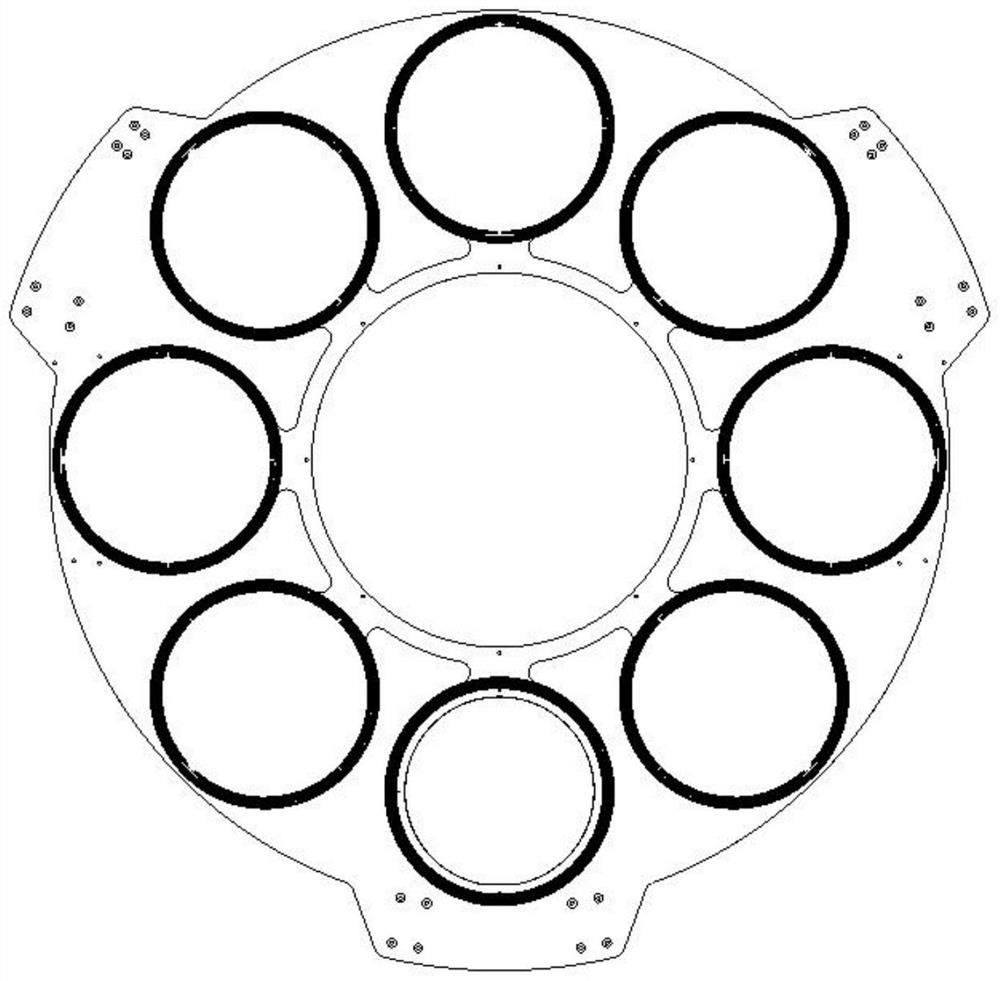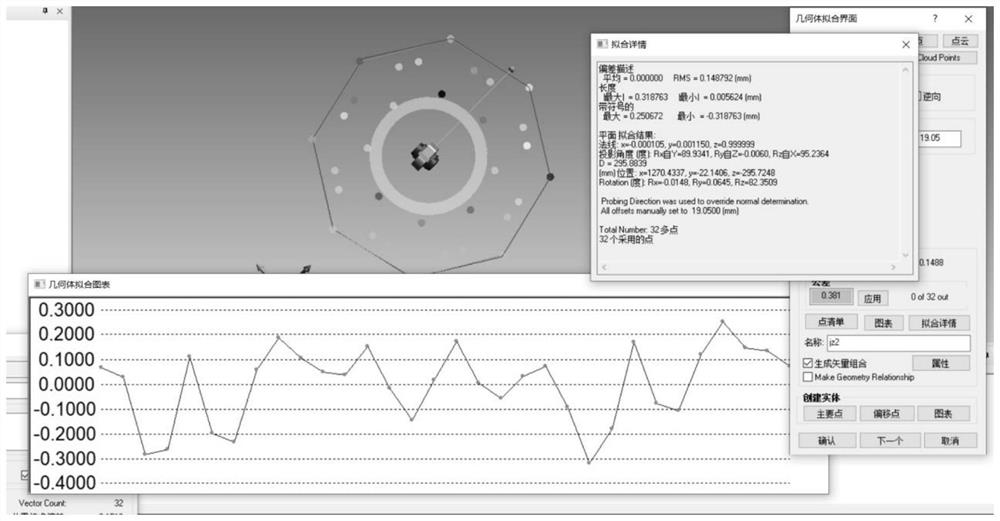Method for detecting coplanarity of eight spliced mirrors
A coplanar and mirror frame technology, which is applied to measuring devices, instruments, and optical devices, can solve problems such as the inability to process single reflectors and limited surface accuracy requirements, so as to reduce the cycle time and increase the speed of assembly and adjustment. , Improve the effect of detection accuracy
- Summary
- Abstract
- Description
- Claims
- Application Information
AI Technical Summary
Problems solved by technology
Method used
Image
Examples
Embodiment Construction
[0024] The present invention will be further described below with reference to the accompanying drawings and specific embodiments.
[0025] A method for detecting the coplanarity of eight splicing mirrors in this embodiment is implemented according to the following steps:
[0026] Step 1, put the eight splicing mirrors according to the figure 2 The mirror frame of the eight splicing mirrors installed in the tooling is shown, and the tooling supports a circular ring. The mirror frames of the eight splicing mirrors are evenly distributed on the tooling, and the frame of each splicing mirror can be adjusted in five dimensions;
[0027] Among them, each splicing mirror on the tooling is a circular mirror with a diameter of 390mm, and its mirror frame is evenly distributed on the ring.
[0028] Among them, eight splicing mirrors are figure 2 The position diagram is installed on the tooling. The tooling and the splicing mirror are installed on the rotating platform. The frame of...
PUM
 Login to View More
Login to View More Abstract
Description
Claims
Application Information
 Login to View More
Login to View More - R&D
- Intellectual Property
- Life Sciences
- Materials
- Tech Scout
- Unparalleled Data Quality
- Higher Quality Content
- 60% Fewer Hallucinations
Browse by: Latest US Patents, China's latest patents, Technical Efficacy Thesaurus, Application Domain, Technology Topic, Popular Technical Reports.
© 2025 PatSnap. All rights reserved.Legal|Privacy policy|Modern Slavery Act Transparency Statement|Sitemap|About US| Contact US: help@patsnap.com



